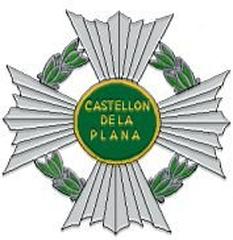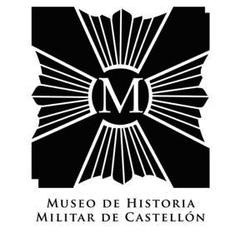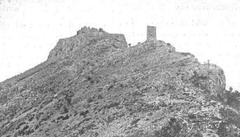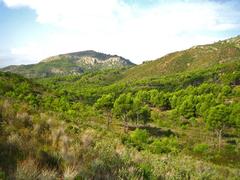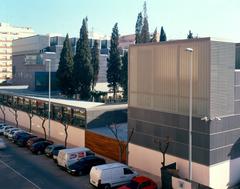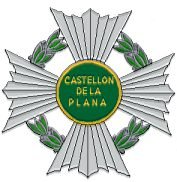
Museo De Historia Militar De Castellón: Complete Guide to Visiting Hours, Tickets, Collections, and Nearby Historical Sites
Date: 14/06/2025
Introduction
Situated in the historic heart of Castelló de la Plana, the Museo De Historia Militar De Castellón is an essential destination for anyone interested in Spain’s military heritage. Housed in the former Regimiento de Infantería Tetúan nº 14 barracks, this museum not only preserves an impressive array of artifacts but also maintains a strong connection to the cultural and historical identity of Castellón and the broader Valencian region. With over 7,000 items in its collection, ranging from uniforms and weaponry to maps, documents, and military vehicles, the museum offers visitors an immersive journey through key events and the lived experience of Spain’s military history.
This guide provides comprehensive and up-to-date information on visiting hours, ticketing, accessibility, guided tours, and nearby attractions, ensuring you can make the most of your visit. Whether you are a history enthusiast, a local resident, or a cultural tourist, the Museo De Historia Militar De Castellón offers a fascinating window into the past and a dynamic hub of community engagement.
For the latest updates and special event information, refer to the museum’s official resources and trusted tourism platforms (Guía Repsol, Sapos y Princesas, Visitarmuseo.com, Comunitat Valenciana).
Table of Contents
- Origins and Historical Context
- The Building: From Barracks to Museum
- Exhibition Spaces and Collection Highlights
- Visitor Information
- Nearby Attractions and Travel Tips
- Frequently Asked Questions (FAQ)
- Summary and Visitor Tips
- References and Further Information
Origins and Historical Context
The Museo De Historia Militar De Castellón is rooted in the region’s military legacy, especially via its location in the former Regimiento de Infantería Tetúan nº 14 barracks. The regiment played a pivotal role in Spanish conflicts, including the Carlist Wars, Spain’s colonial campaigns, and the Spanish Civil War. Many artifacts were donated by local families, reflecting Castellón’s deep community ties to its military past (Guía Repsol).
The Building: From Barracks to Museum
Architectural Features
Set in a robust late-19th-century military structure, the museum features two main floors and a distinctive tower. The outdoor area showcases artillery and military vehicles, integrating the building’s utilitarian heritage with modern exhibition needs (Sapos y Princesas).
Adaptive Reuse and Preservation
After its military use ended, the barracks were restored and adapted for museum purposes. The transformation maintained historical elements while ensuring accessibility and optimal artifact conservation. The museum’s layout leverages the building’s original configuration, with exhibitions occupying former troop quarters and administrative spaces.
Exhibition Spaces and Collection Highlights
Chronological and Thematic Galleries
The museum’s exhibitions are divided chronologically and thematically, providing a comprehensive perspective on Castellón’s military history:
- 16th–19th centuries: Coastal defenses and early regional military actions.
- Peninsular and Carlist Wars: Uniforms, weapons, and personal effects from both government and Carlist forces.
- Colonial Campaigns: Artifacts from Spain’s wars in Cuba, the Philippines, and Africa.
- Spanish Civil War and Postwar: Items from both Republican and Nationalist sides, as well as postwar and peacekeeping missions.
- Thematic Rooms: Focus on the history of Castellón regiments, compulsory military service, military music, the Red Cross, Guardia Civil, and innovations in ammunition and equipment (Sapos y Princesas).
Notable Artifacts
Among the museum’s 7,000+ catalogued items, standouts include:
- Uniforms and Insignia: Covering eras from the Carlist to present-day international missions.
- Decorations: Laureate Crosses of Saint Ferdinand and other valor awards.
- Weapons: From 19th-century sabres to modern firearms.
- Vehicles and Artillery: Displayed outdoors, illustrating technological evolution.
- Maps, Documents, Photographs: Providing context and personal stories (Guía Repsol).
Visitor Information
Opening Hours
- Standard Hours:
- Tuesday to Saturday: 10:30 AM – 1:30 PM
- Closed Sundays, public holidays, and August 16–31
(Turismo de Castellón)
Tickets and Admission
- Admission: Free for all visitors.
- Group Visits and Guided Tours: Available by prior arrangement through the museum’s website.
Accessibility
The museum is generally accessible, with ramps and adapted facilities. Visitors with mobility needs should contact staff in advance to ensure accommodations (Visitarmuseo.com).
Guided Tours and Educational Programs
Guided tours—recommended for school groups and enthusiasts—are primarily offered in Spanish; English tours may be arranged with notice. The museum also hosts workshops and temporary exhibitions commemorating significant military events (Comunitat Valenciana).
How to Get There
Address: Diputación Provincial – Nuevas Dependencias, Avda. la Vall d’Uixó, 25, 12004 Castellón, Spain
Phone: (+34) 964 359 883
The museum is accessible by car, taxi, or local bus. Street parking is available, though limited during peak times (Castellón Turismo).
Nearby Attractions and Travel Tips
Enhance your cultural itinerary by visiting other Castellón historical sites such as the Fadri Tower, Castellón Cathedral, Ribalta Park, and the Provincial Museum. The museum’s outdoor displays are ideal for families and photography enthusiasts. Exhibits are mainly labeled in Spanish; using a translation app or joining a guided tour is recommended for non-Spanish speakers.
Visitor tips:
- Allocate 1–1.5 hours for your visit.
- Weekday mornings offer a quieter experience.
- Combine your museum visit with a walk through the city’s historic center.
Frequently Asked Questions (FAQ)
Q: What are the museum’s opening hours?
A: Monday to Saturday, 10:30 AM – 1:30 PM; closed Sundays, public holidays, and August 16–31.
Q: Is there an admission fee?
A: No, entry is free for all visitors.
Q: Are guided tours available?
A: Yes, by prior arrangement through the museum’s website; primarily in Spanish, with English tours possible on request.
Q: Is the museum wheelchair accessible?
A: The museum is generally accessible; contact staff in advance for specific needs.
Q: Can I take photos inside the museum?
A: Yes, in most areas. Flash and tripods may be restricted.
Summary and Visitor Tips
The Museo De Historia Militar De Castellón stands as a vital cultural institution, blending Castellón’s military legacy with public education and community engagement. Its accessible facilities, free admission, and wealth of artifacts make it a rewarding experience for visitors of all ages and backgrounds. By planning your visit with the latest information from the museum’s official resources, you ensure a smooth and enriching journey through the region’s military past (Guía Repsol, Visitarmuseo.com, Comunitat Valenciana).
For additional resources, virtual tours, and updates on exhibitions, visit the official museum website and the Comunitat Valenciana tourism portal. Consider downloading the Audiala app for interactive guides and enhanced visitor experiences.
References and Further Information
- Guía Repsol: Museo De Historia Militar De Castellón
- Visitarmuseo.com: Museo De Historia Militar De Castellón
- CCSalera.com: Museos Castellón
- Comunitat Valenciana: Museo de Historia Militar de Castellón
- Castellón Turismo: Museo de Historia Militar
- Turismo de Castellón: Museo de Historia Militar
- Aula Militar Bermúdez de Castro
